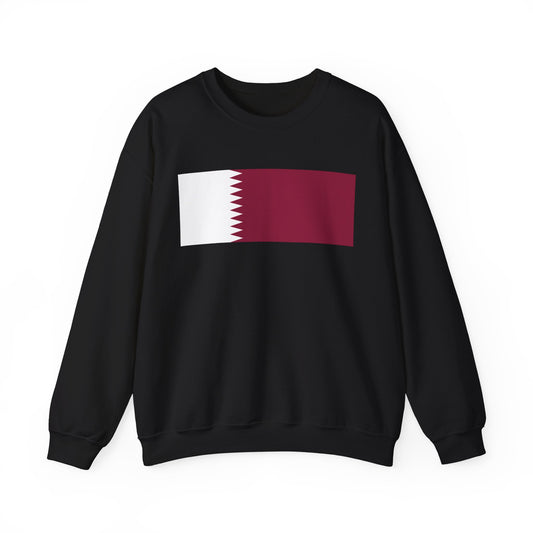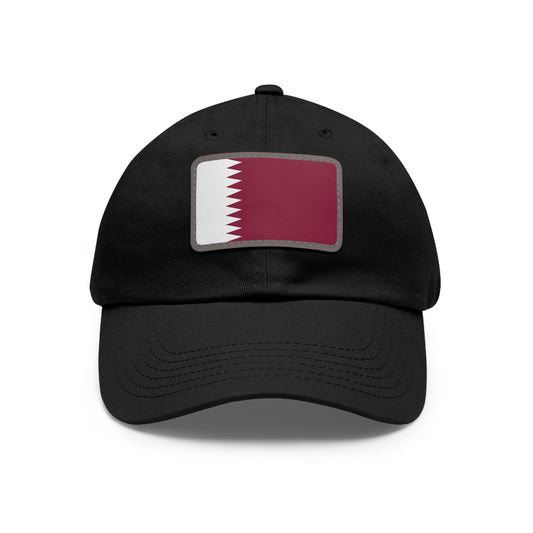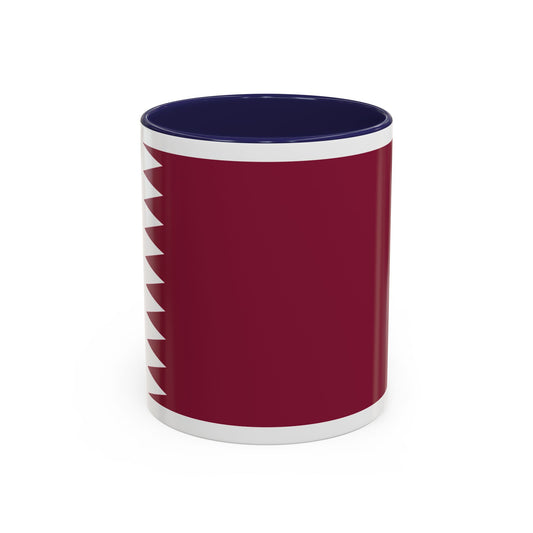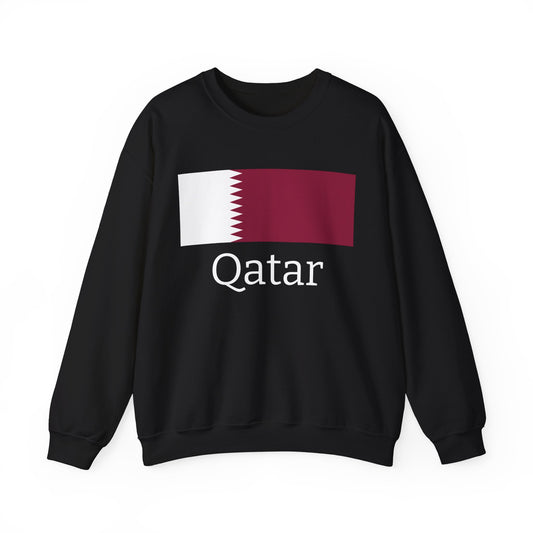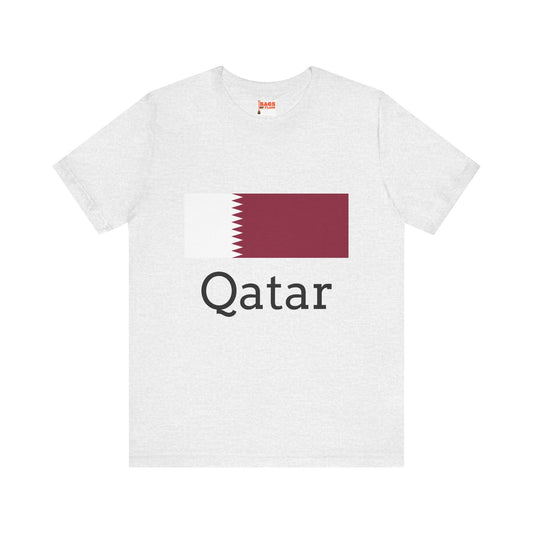-
Qatar Flag Sweatshirt
Regular price $34.15 USDRegular priceUnit price / per -
Qatar Pillow
Regular price $22.65 USDRegular priceUnit price / per -
Qatar Backpack
Regular price $59.79 USDRegular priceUnit price / per -
Qatar Leather Patch Hat
Regular price $18.85 USDRegular priceUnit price / per -
Qatar Sweatshirt
Regular price $34.15 USDRegular priceUnit price / per -
Qatar Hoodies
Regular price $34.40 USDRegular priceUnit price / per -
Qatar T-shirts
Regular price $22.79 USDRegular priceUnit price / per -
Qatar Flag Hoodies
Regular price $34.40 USDRegular priceUnit price / per -
Qatar Flag on T-shirt
Regular price $22.79 USDRegular priceUnit price / per
Collection: Qatar
The Qatar flag, also known as the flag of Qatar, is a symbol of pride and identity for the nation. Its distinctive design and colors hold deep significance for the people of Qatar. We will delve into the history, symbolism, and controversies surrounding the Qatar flag.
Overview of the Qatar Flag's Design and Colors

The national emblem of Qatar boasts a unique and striking design that features a maroon field adjacent to a white serrated band with nine white points on the hoist side. This distinctive configuration sets it apart visually and embeds it with profound meaning. Maroon, rather than pure red, differentiates the Qatar flag from the similar flags of neighboring countries. This color choice is deeply intentional, representing the bloodshed in Qatari wars and the nation's resilience. Conversely, the pristine white band symbolizes the peace and aspirations of the Qatari people.
The serrated edge, comprising nine points, is symbolic, reflecting Qatar's status as the 9th member of the 'reconciled emirates' in the wake of signing the Qatar-British treaty. This design intricately blends historical references with aspirations of unity and peace, encapsulating the nation's struggles and hopes for the future. The flag’s proportions further contribute to its uniqueness, with an unusual width-to-length ratio of 11:28, making it one of the only national flags with such distinct dimensions.
Historical Context Surrounding the Qatar Flag
The journey to the current Qatar flag began well before its official adoption in 1971. Historically, Qatar utilized a plain red flag, similar to many other states in the Persian Gulf, reflecting a common design theme in the region. However, in the early 20th century, Qatar began distinguishing its flag by adding a white stripe on the hoist side to symbolize peace and diplomatic relationships. The precise shift to the distinctive maroon color occurred by the 1940s, a transition from the traditional red used previously, which is believed to have been due to the sun's fading effect on the red dye used in the flag.
This unintentional alteration was eventually embraced and officially adopted, leading to the unique maroon shade we see today. The formal recognition of this design coincided with Qatar's declaration of independence from British oversight in 1971, marking a new chapter in Qatari sovereignty and national identity. Throughout these changes, the flag has served as a symbol of Qatar's evolving status and aspirations. It reflects its journey from a British protectorate to an independent nation-state with a distinct place in the global community.
Symbolism Encapsulated in the Qatar Flag

The symbolism of the Qatar flag is rich and multifaceted, reflecting the nation's history, aspirations, and values. Beyond the maroon and white colors denoting the bloodshed in wars and the pursuit of peace, the flag's design carries deeper meanings. The nine-point serrated edge is mainly symbolic, representing Qatar’s significant inclusion as the ninth member of the reconciled emirates after the Qatar-British treaty. This design aspect highlights Qatar’s historical journey towards sovereignty and unity, embodying the country's path from a protectorate under British oversight to an independent nation.
The specific choice of the color maroon over a more conventional red further distinguishes the Qatari identity, embodying a unique aspect of the nation’s heritage and resilience against environmental factors that once inadvertently altered the flag's appearance. Additionally, the white color serves as a reminder of the importance of diplomacy and peace in Qatar's international relations. Together, these elements coalesce into a flag that is not just a national emblem but a story of survival, diplomacy, and independence, resonating with the collective memory and pride of the Qatari people.
Current Relevance of the Qatar Flag
Today, the Qatar flag is a prominent feature in both national and international settings, symbolizing the country's sovereignty and unity. It is regularly seen fluttering atop government buildings, during sporting events, and at military ceremonies, serving as a constant reminder of the nation's pride and heritage. Additionally, it plays a pivotal role in Qatar's diplomatic engagements, often displayed during official state visits and international forums to represent the country globally. However, the flag has not been immune to controversy, especially considering Qatar's evolving role in regional politics. Its visibility has been particularly heightened during geopolitical tension, where it has become a focal point for discussions around national identity, sovereignty, and Qatar's stance on various international issues. Despite these challenges, the flag continues to be a source of unity and pride for Qataris, reflecting the nation's resilience and the shared aspirations of its people.
Additional Facts About the Qatar Flag
The handling and display of the Qatar flag follow protocols aimed at maintaining its dignity and respect. It is considered a severe breach of etiquette for the flag to come into contact with the ground, and it must always be displayed prominently and with honor in all official settings. During national celebrations or moments of significant patriotic fervor, the flag's presence is ubiquitous, reinforcing its role as a national unity and pride symbol.
One of the lesser-known facts about the Qatar flag involves its dimensions, which have a unique ratio of 11:28, distinguishing it from the flags of other nations. This aspect underscores the flag's distinctiveness in design and form, making it easily identifiable on the international stage.
The flag's role extends beyond mere symbolism; it is vital to Qatar's identity, especially in international arenas. During the 2017 diplomatic crisis, when several neighboring countries cut diplomatic relations with Qatar, the absence of the Qatar flag in these countries highlighted its significance in representing the nation's sovereignty and the gravity of the situation.
Moreover, a rare point of interest is the flag's evolutionary journey from a simple red banner to its current design, reflecting a transition from colonial influences to a symbol of independence and self-determination. This evolution is a testament to Qatar's historical resilience and its path towards establishing a unique identity on the global front.
Beyond its official protocols and unique dimensions, the Qatar flag stands as a beacon of the country's enduring spirit, rich history, and aspirations for the future. It serves as a constant reminder of the nation's values and the collective identity of its people.


